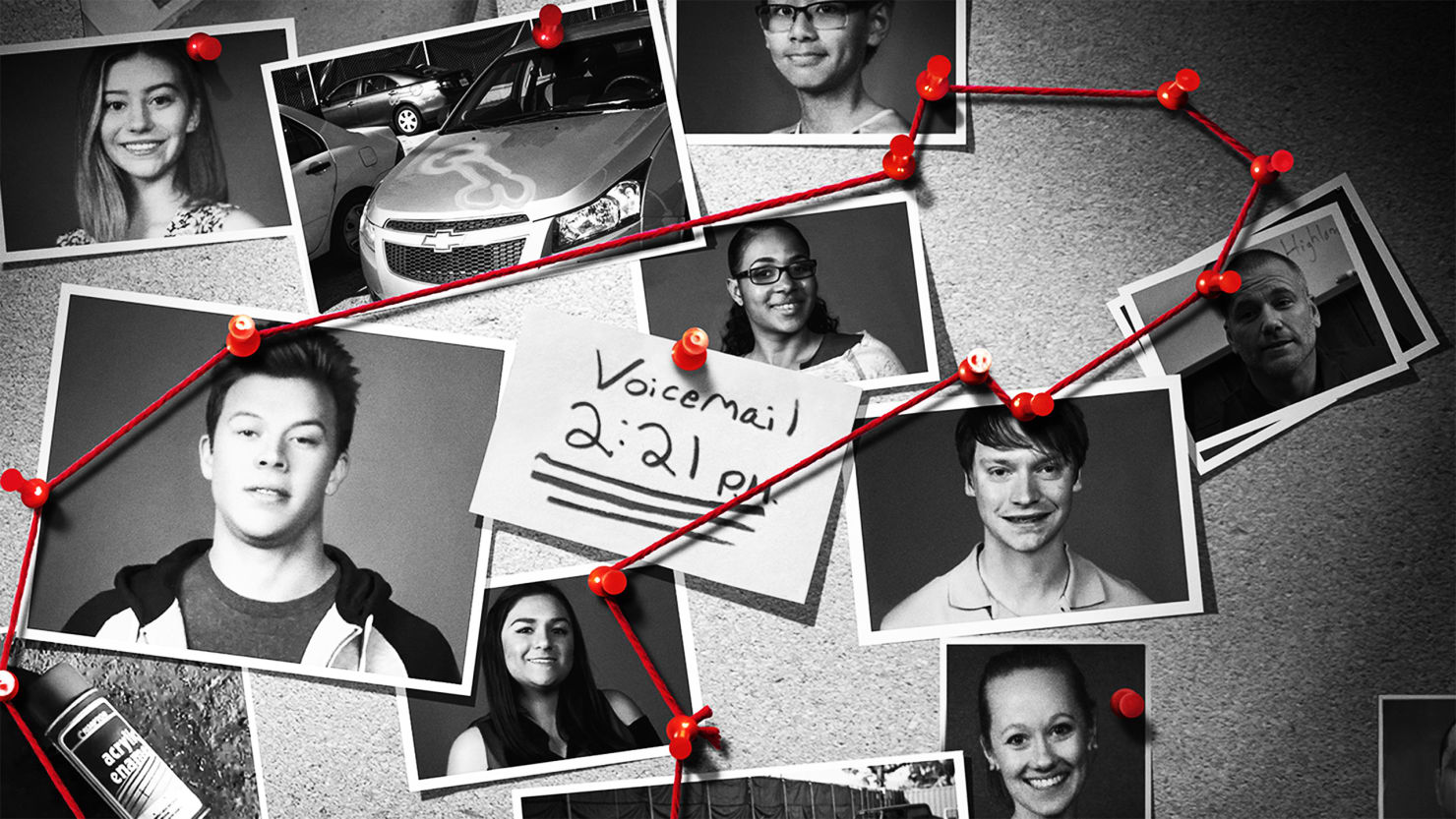Okay, first things first. The Netflix original series “American Vandal” is very, very good and you should go watch it right now. You probably have heard a lot of that since the show was released in September. The series is an investigative mockumentary done in the style of the podcast “Serial” or “American Crime Story” about a fictional crime: twenty-seven dicks spray-painted on cars in the staff parking lot of a high school in California.
Upon watching the first episode, I immediately found myself cracking up at the extremely serious tone the “director” (a character in the show named Peter) was taking when investigating such juvenile subject matter. But it seemed like a one-joke show: Someone vandalized cars with penises and this guy is taking it too seriously. How, I asked myself, could they stretch this out for an entire season of television?
This is the strength of “American Vandal” and the reason why it has gotten so much attention. The show is not good; it is surprisingly good.
Characters
The first thing that pulls you into “American Vandal” is the excellent characterization. The subject of the mockumentary, a student accused of the vandalism and expelled without hard evidence, is named Dylan Maxwell. Dylan is hilarious both in the writing and in the performance from YouTuber Jimmy Tatro. Dopey, inarticulate, immature, Dylan is vividly rendered within the first few minutes of the show.
He feels specific. You knew a kid like Dylan that went to your high school, and you probably would’ve assumed he did the dick drawings too. It makes him funny, but it also lends some legitimacy to the premise of the show. We assume so much about people without knowing them well and this documentary is setting out to unpack those assumptions. With time, the writers make you actually like Dylan. You root for him.
The same goes for other characters. The director and debatable protagonist, Peter, is endearingly awkward and over-serious. His relationship with his friend and investigative partner Sam is full of believable moments of joking around, tension and teamwork. Pretty much every character possesses this kind of specific, dynamic characterization. From your jock type, to the try-hard class president, to the weasel-y kid who initially accuses Dylan of being the vandal, they were all people you knew in high school. It doesn’t just make the scenes hilarious, it makes the drama that unfolds believable and poignant.
Plotting
The other notable thing about “American Vandal” is that it gets you legitimately engrossed in the mystery of “who drew the dicks.” What seems like a simple case immediately fractures seven different ways, as each interview with a student or faculty member reveals more layers of complications. A quote from Peter probably sums it up best.
“Everyone has something to hide. People withhold information. People exaggerate. People lie. And when it’s impossible to trust anyone, you have to go back to the facts and draw your own conclusion.”
In his quest for truth, Peter is sent on wild goose chases by his classmates, given reason to suspect innocent people and intimidated by teachers and other school staff. Rarely are these reasons directly connected to the vandalism itself, but they derive from personal fears and desires. Maybe an interviewee wants you to think he’s cool and makes it seem like he knows more than he does. Maybe someone doesn’t want you to know a person they hooked up with and fabricates information around the event, unintentionally obfuscating the real vandal.
Whatever the complication may be, the tension rises consistently and is always based in character. It makes for good drama. And so in a similar fashion to how we judge Dylan Maxwell right off the bat and are slowly endeared to him over time, “American Vandal” presents itself as a joke, and slowly wins your un-ironic interest and curiosity with each episode.
The stakes slowly become real to you. The vandal, after spray-painting twenty-seven cars, is actually responsible for felony-level damage to private property. He/she faces expulsion, a ruined chance at college and a financial debt of over $100,000.
Without getting too spoiler-y, the end is surprisingly melancholy and distressing. Some people hated it, but I think the shift in tone is as smart as it is brave. The specificity of the characters makes them real, makes their world real and, therefore, makes the conflict unbearably tense.
The Meta
This is where “American Vandal” is most interesting. Obviously, the entire conceit of the show exists under the general umbrella of “satire” or even “social commentary,” but what is surprising is that the show’s self-awareness actually affects the plot directly.
For instance, the documentary Peter is creating about the vandalism is posted on YouTube (in the show only), where it goes viral. Suddenly, the students within the show have seen everything the actual audience has been watching for the past few episodes. It shows, for one, that the writers anticipated the way the show would be received by its real viewers. The students in the show find the high quality of the documentary covering dick drawings as amusing as we do, and are as invested in the mystery as we are.
More importantly, it changes how the doc is shot. The school faculty, upon having their negligence in accusing Dylan so haphazardly put on public display, immediately develop contempt for Peter despite the fact that he is otherwise a good student. “American Vandal” is banned from being shot on campus, forcing Peter to adapt in the way he gets his interviews and information.
Students who have had personal information made public through the show also grow to hate Peter, claiming that these are real people’s lives he is toying with in his effort to “make the best movie.” It adds layers and layers of moral complication on to the whole thing, and even makes you regret laughing at some of the characters so much.
Social media is also a huge element at play here. A lot of evidence is garnered through a collage of Instagram posts and Facebook messages. In fact, there is a scene where Peter pieces together all the events of a party he wasn’t present for by combining social media posts of over ten different students, creating an almost seamless timeline from disparate video sources and viewpoints. It is insanely clever.
The result of all this, for me, was a pleasant surprise and mounting excitement. A show with a seemingly dumb premise revealed not only layers of meticulous characterization and plotting, but also an extremely fresh approach to the entire documentary genre that utilizes current technology and cultural norms. It is a show that is very much of its time and one that is not only consistently funny, but ultimately heartfelt and touching as well.

















